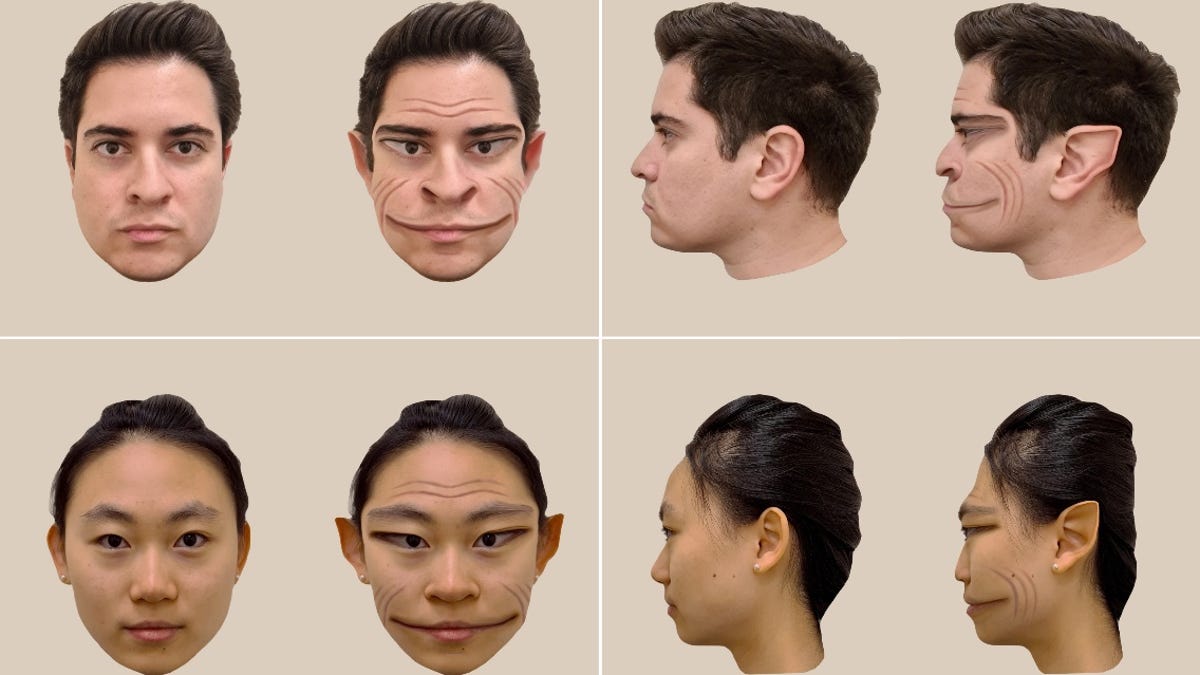A 58-year-old man with a rare medical condition sees faces normally on screens and paper, but in person, they take on a demonic quality. The patient has a unique case of prosopometamorphopsia (PMO), a condition that causes peoples’ faces to appear distorted, reptilian, or otherwise inhuman.
The Fujifilm X100VI is the Most Fun I’ve Had With a Camera in Years
A new study published in The Lancet describes the case, which is unique in that, to the man, the faces only appear demonic when the individuals are physically present. The patient has been perceiving faces as distorted for 31 months; at first, it was distressing to him, but now, he has “become habituated to them,” the paper states.
Because faces appear ordinary to him on screens and in person, the research team had a unique opportunity to probe how the distortions manifest and create accurate visualizations of the “demonic” countenances.
“In other studies of the condition, patients with PMO are unable to assess how accurately a visualization of their distortions represents what they see because the visualization itself also depicts a face, so the patients will perceive distortions on it too,” said Antônio Mello, a researcher at Dartmouth College and lead author of the study, in a university release. “Through the process, we were able to visualize the patient’s real-time perception of the face distortions.”
For the patient, faces in person are unsettlingly distorted. Eyes are stretched and angular, nostrils flare out and lips stretch outwards to comprise the entire width of the face. Grooves appear in the forehead, and ears warp into an elvish shape, ending in sharp points. In milder cases, facial features merely droop, appear out of position, or are smaller or larger than they are in real life.
In another case, published in The Lancet in 2014, a 52-year-old woman in The Netherlands reported:
A life-long history of seeing people’s faces change into dragon-like faces and hallucinating similar faces many times a day. She could perceive and recognise actual faces, but after several minutes they turned black, grew long, pointy ears and a protruding snout, and displayed a reptiloid skin and huge eyes in bright yellow, green, blue, or red. She saw similar dragon-like faces drifting towards her many times a day from the walls, electrical sockets, or the computer screen, in both the presence and absence of face-like patterns, and at night she saw many dragon-like faces in the dark.
According to Brad Duchaine, senior author on the study and principal investigator of Dartmouth’s Social Perception Lab, people suffering from PMO are often diagnosed with other disorders, like schizophrenia, and prescribed anti-psychotics.
“It’s not uncommon for people who have PMO to not tell others about their problem with face perception because they fear others will think the distortions are a sign of a psychiatric disorder,” Duchaine said. “It’s a problem that people often don’t understand.”
The 58-year-old patient had a history of bipolar affective disorder and post-traumatic stress disorder (PTSD), the research team noted, as well as a head injury when he was 43 years old. The patient had no impairments to eyesight and a small round lesion on his left hippocampus, which the team concluded was a cyst. Other individuals suffering from an Alice in Wonderland syndrome (a catch-all term for perceptual distortions) also were reported to have brain lesions; encephalitis, migraines, and psychoactive drug use are also linked with the syndrome, though none were observed in the recent patient’s case.
To characterize the facial distortions, the researchers had the man describe perceived differences between the face of a person in the room with him and a photo of that person. Due to his PMO, the in-person face was distorted, and the on-screen face looked like an ordinary face.
PMO can last just days for some, and years for others. Only 75 case reports of PMO have been published, according to the researchers. It’s certainly one of the rare—and more disturbing—perceptual disorders, but knowing how it manifests means that fewer patients will be misdiagnosed in the future.
More: Vital Clues to Chronic Fatigue Syndrome Found in Major New Study
